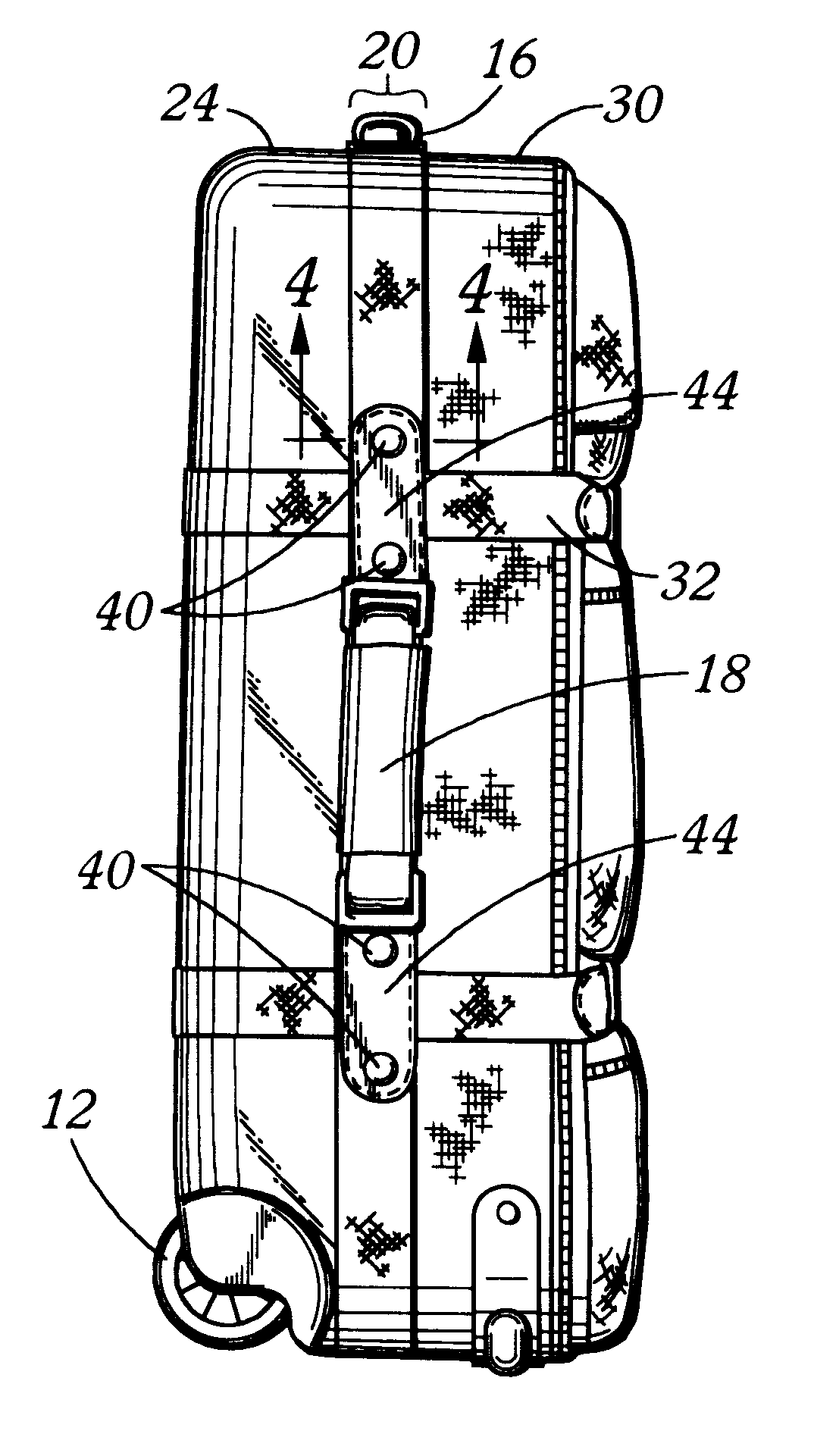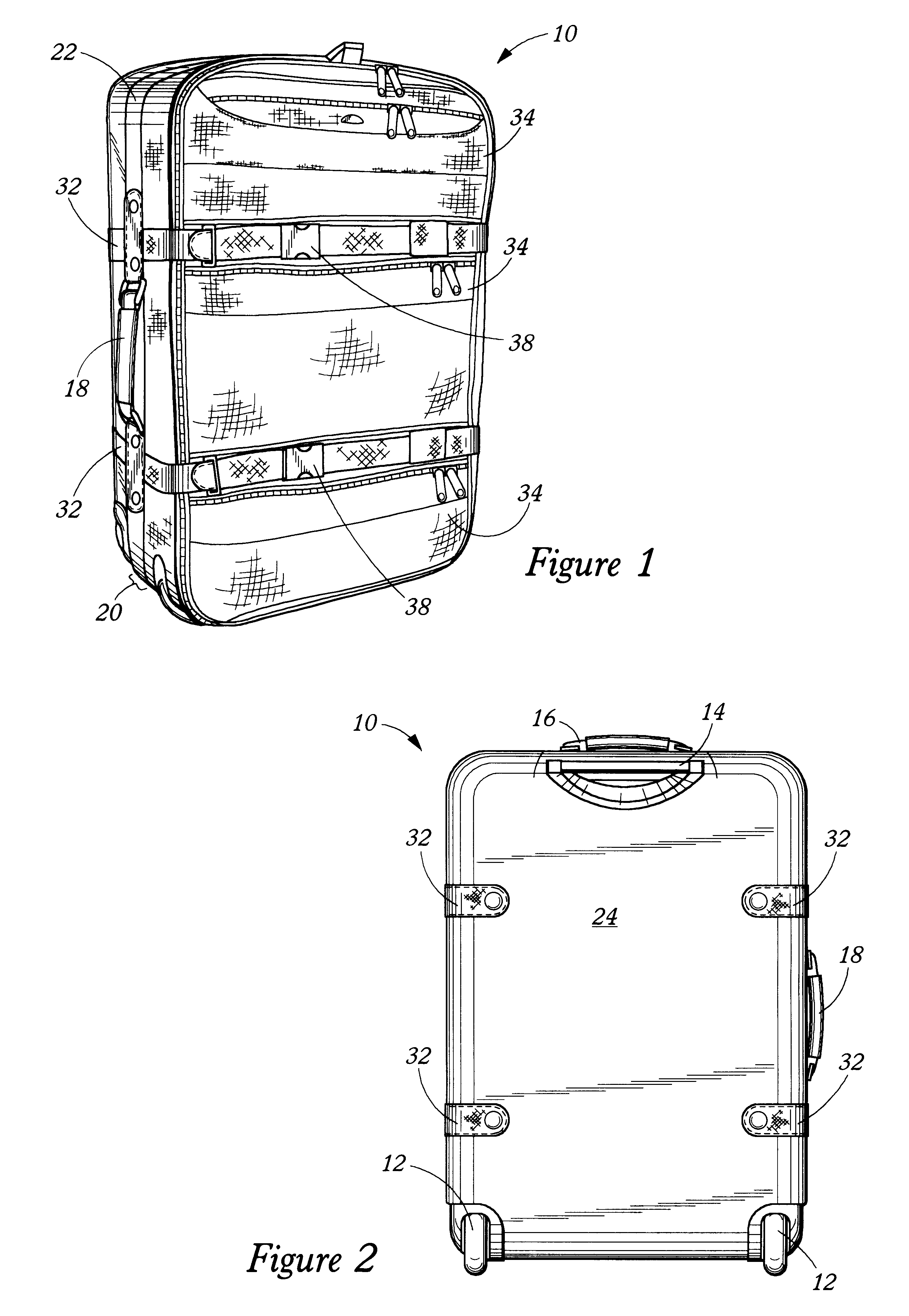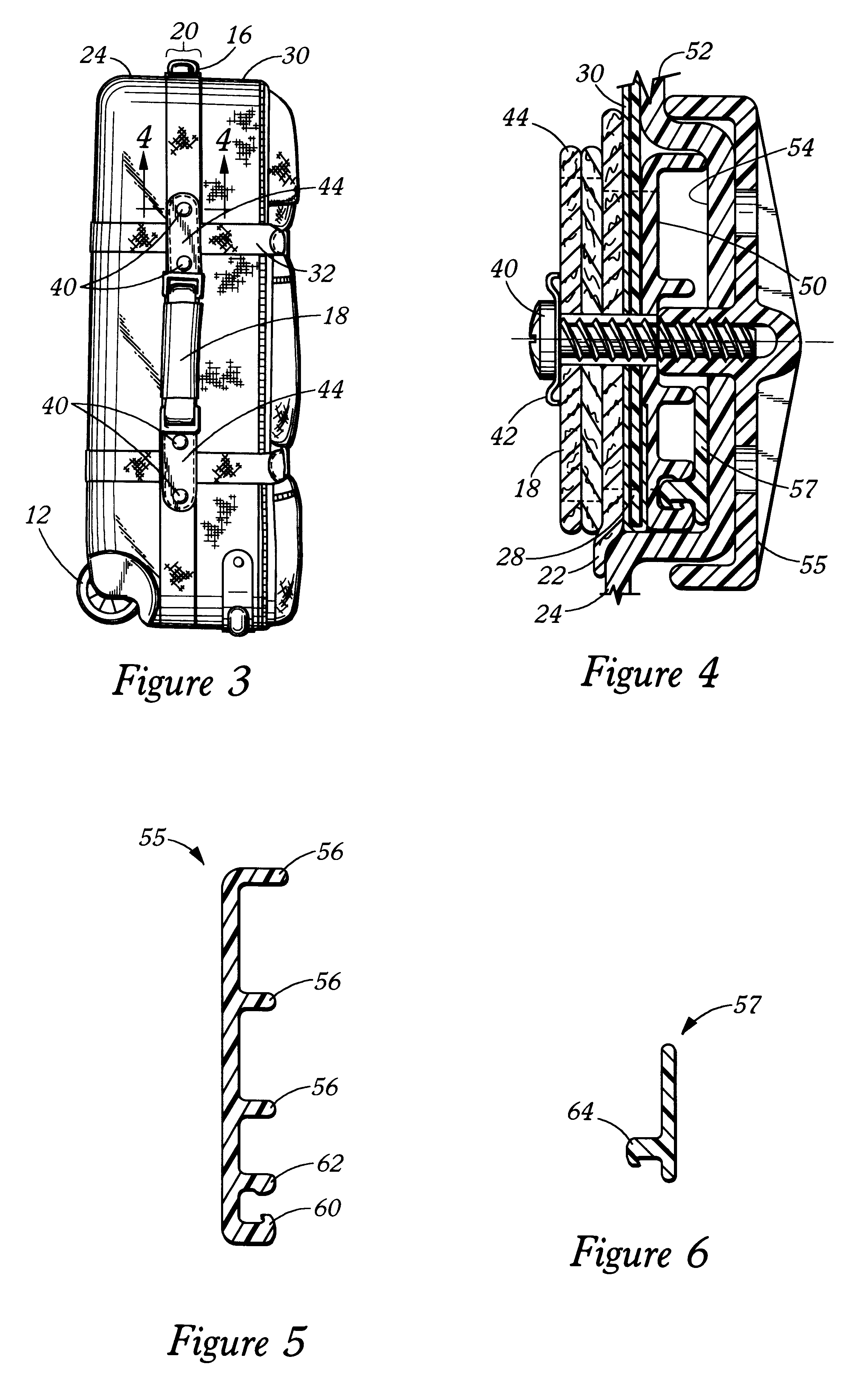Hybrid construction luggage case
a suitcase and hybrid construction technology, applied in the field of suitcases, can solve the problems of large amount of textile material in the lid to accumulate or gather, and it is difficult to properly fit a generally textile constructed suitcase to the integrally molded sides of the base shell, and achieves the effect of strong connection
- Summary
- Abstract
- Description
- Claims
- Application Information
AI Technical Summary
Benefits of technology
Problems solved by technology
Method used
Image
Examples
Embodiment Construction
)
Although the invention has been described in detail with particular reference to the preferred embodiment, other embodiments can achieve the same results. Variations and modifications of the present invention will be obvious to those skilled in the art and it is intended to cover in the appended claims all such modifications and equivalents. The entire disclosures of all references, applications, patents, and publications cited are hereby incorporated by reference.
Referring to the figures, the luggage case 10 according to the preferred embodiment is of the upright style, having two wheels 12 and 12 at one end and a handle 14 of a known mechanical type for towing the case on wheels at the other. As will be detailed, the case includes at least two other handles 16, 18 primarily used to carry the luggage case over obstacles and to help manipulate the luggage case into the trunks of automobiles and the holds of aircraft. The outside of the luggage case is dominated by a joint 20 define...
PUM
 Login to View More
Login to View More Abstract
Description
Claims
Application Information
 Login to View More
Login to View More - R&D
- Intellectual Property
- Life Sciences
- Materials
- Tech Scout
- Unparalleled Data Quality
- Higher Quality Content
- 60% Fewer Hallucinations
Browse by: Latest US Patents, China's latest patents, Technical Efficacy Thesaurus, Application Domain, Technology Topic, Popular Technical Reports.
© 2025 PatSnap. All rights reserved.Legal|Privacy policy|Modern Slavery Act Transparency Statement|Sitemap|About US| Contact US: help@patsnap.com



